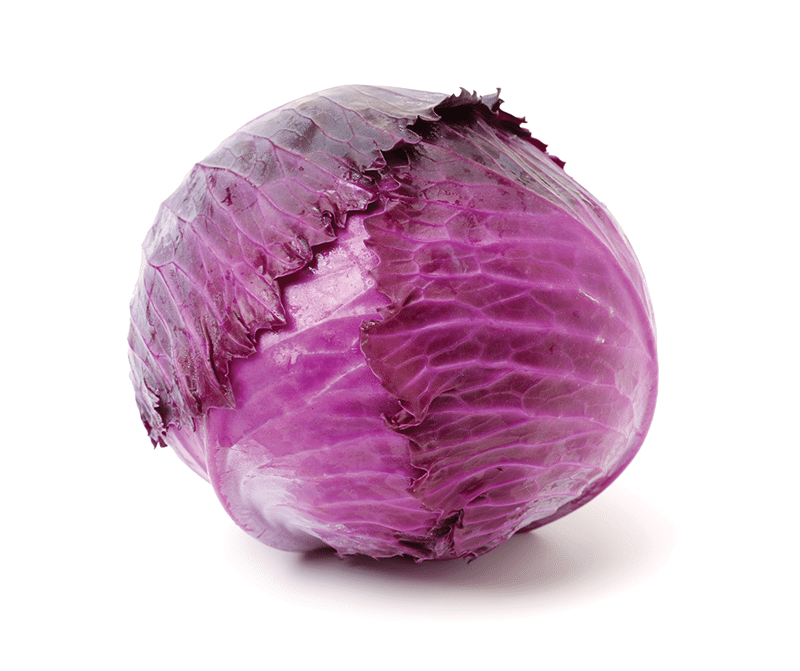What’s better than cabbage and rainbows in March? Well, boiled cabbage may be an acquired taste (and smell!) this time of year, but you can try your luck and some science magic to enjoy this red cabbage activity. It won’t yield a pot of gold, but you’ll get to create a rainbow of kitchen chemistry and fun!
Here’s what you need:
• 1 head red cabbage
• Safety glasses
• 6 cups boiling water
• Blender
• Strainer
• Large bowl or pitcher
• Measuring cups
• Measuring spoons
• Large sealable container to store cabbage juice (clean 2 liter bottle, milk carton, etc.)
• 5 clear drinking glasses
• Lemon juice (fresh or bottled)
• White vinegar
• Baking soda
• Laundry detergent
• Spoons or sticks for mixing
• Optional: Milk, antacid tablets, ammonia, soda/soft drinks, other fruit juice, sports drinks, etc.
Directions:
1. Put on safety glasses and with an adult’s help, bring six cups of water to a boil.
2. While water is heating, rip up a few leaves of the cabbage and place in blender.
3. Add 2 cups of boiling water into blender and turn on. Blend until the leaves are a fine pulp. Add more water if needed.
4. Pour your cabbage juice through a strainer into the bowl/pitcher. Discard the cabbage pulp (it’s safe to add to your compost pile!).
5. Repeat until you’ve used all of your water. One head of cabbage can make more than a gallon of juice, so it’s up to you if you want to use all of it.
6. Allow the cabbage juice to cool. Store in a sealed container in the refrigerator if not using immediately.
7. Fill all five glasses at least ½ full with cabbage juice. Make observations: what does it look like?
8. Add 1 teaspoon of lemon juice to one of the cups of cabbage juice and observe.
9. Add 1 teaspoon of baking soda to a separate cup of cabbage juice and observe.
10. Continue this for each of the materials you want to test (vinegar, laundry detergent, milk, etc.), adding only that material to the cabbage juice. Leave one glass of cabbage juice with nothing in it as your control.
What did you observe?
What color was your cabbage juice to begin with? Red cabbage contains a pigment called anthocyanin, which causes it to appear purple in color. This chemical changes color depending on the pH of its environment, so we call it a pH indicator. This means when we add something acidic, like lemon juice, to the neutral purple, it will change color to a lighter and brighter pink or red. When we add something more basic or alkaline, like baking soda or ammonia, it will turn blue, green, or even yellow! Try testing some other materials in your kitchen, like milk or soft drinks and make predictions about what color you think they will turn. What did you observe? When you’re done testing, try organizing your colors into most acidic to most basic and snap a rainbow picture.
Did you know:
A popular tea made from the purple Butterfly Pea flower also has these same color changing properties since it contains anthocyanin pigments. What other foods do you think might have the same properties?
Sari Custer is a life-long science junkie, and the Chief of Science and Curiosity at Arizona Science Center. In addition to serving as the public spokeswoman for the Science Center, Sari is also host of the video series, Sari on Science, which fosters excitement about science for viewers of all ages





